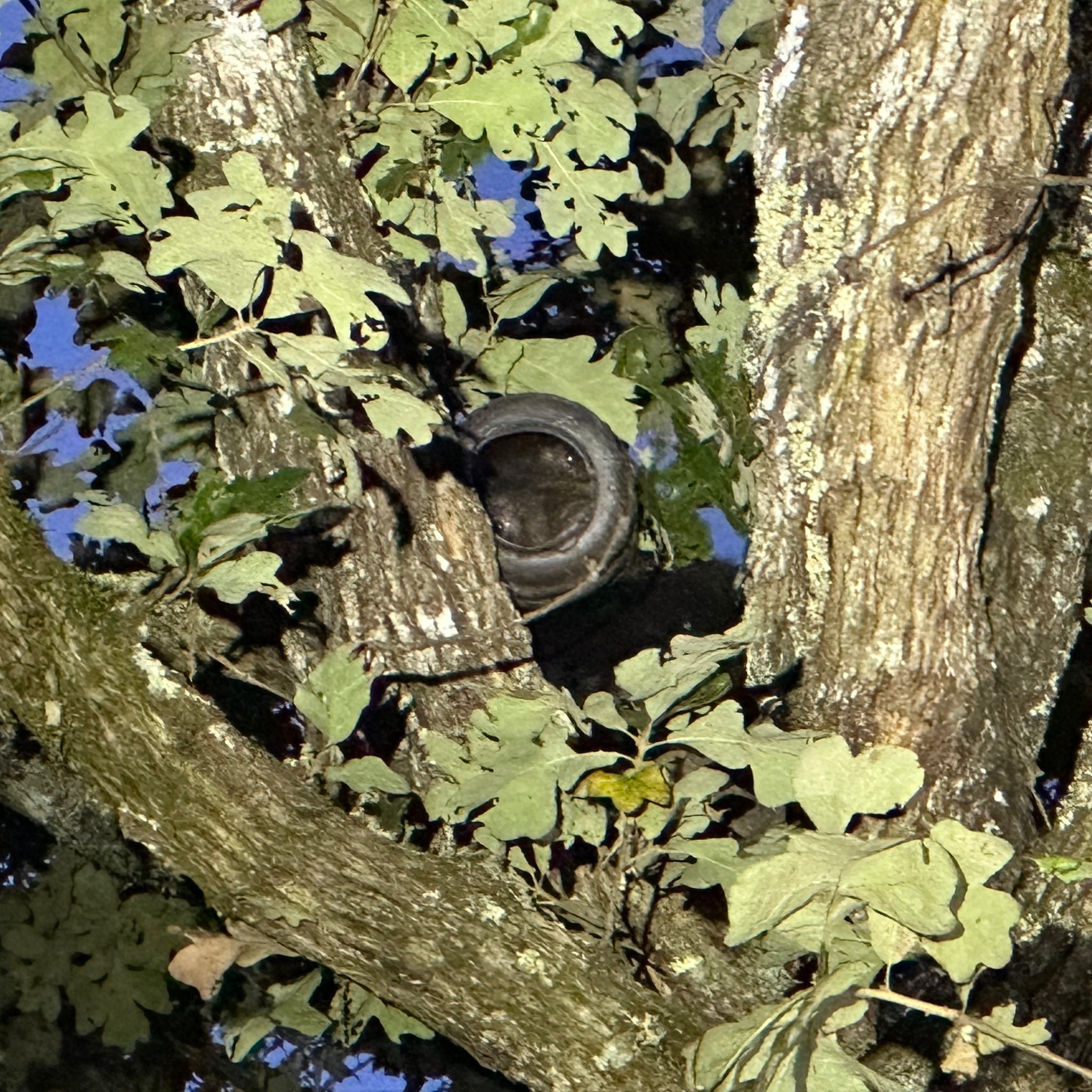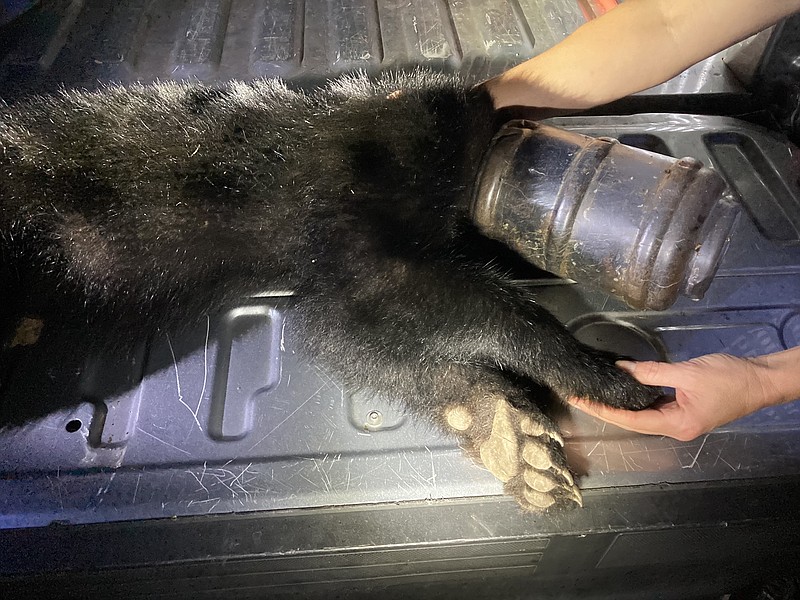A black bear cub near the Cherokee National Forest and the Great Smoky Mountains National Park was rescued from a plastic feeding container that got stuck on its head, and state wildlife officials said the life-threatening incident is an important reminder to take steps to keep bears and humans safe.
The first report on the cub came Aug. 14 when a resident near Chilhowee Lake near Maryville, Tennessee, saw a bear and four cubs on her porch. One of the cubs had a plastic container on its head, Tennessee Wildlife Resources Agency officials said in a statement. Chilhowee Lake is a reservoir on the Little Tennessee River, not to be confused with the lake in Polk County on Chilhowee Mountain.
Janelle Musser, an agency black bear support biologist, headed to the area to begin a trapping effort to save the cub, officials said. She was able to lure the cub into a trap, but it couldn't trigger it with its mouth because of the container on its head.
(READ MORE: Case: Let's talk about the bear in the room)
Musser moved the trap each time the cub's location was reported, officials said, even trying a different style trap with a foot plate trigger, but at this point, the mother became wise to the trap and was difficult to pattern.
On Tuesday, a resident who had been following the situation reported the cub was in a tree, and Musser was able to dart the animal and finally remove the container.
"Darting bears in trees is not standard practice and is only done in an emergency," Musser said in the statement. "This cub would not be able to continue surviving like this."
Despite the long entrapment of its head, the bear did not have any abrasions from the container and was in relatively good shape other than its ears being mashed down to its head, officials said.
The cub is recovering at Appalachian Bear Rescue in Townsend, Tennessee.
Life's looking up for the little cub after a few days of care, said Dana Dodd, executive director of the rescue.
"He's doing fine. He's eating well, and he's resting well, and his ears are even starting to stand up a little bit," Dodd said in a phone interview.
The cub's capture would not have been possible without help from the community reporting sightings, allowing traps on their properties, and being an extra set of eyes, ears and hands, according to officials.
 Tennessee Wildlife Resources Agency / This black bear cub was rescued by state wildlife officials after a resident near Chilhowee Lake spotted the young bear with its head stuck in a bird feeder. The bear cub was with its mother when first seen Aug. 14.
Tennessee Wildlife Resources Agency / This black bear cub was rescued by state wildlife officials after a resident near Chilhowee Lake spotted the young bear with its head stuck in a bird feeder. The bear cub was with its mother when first seen Aug. 14.
'BearWise'
Garbage, birdseed and pet food are the main attractants that bring bears into homeowners' yards, near their homes and on their porches, wildlife officials said in the statement. In this case, an automatic pet food feeder left out for dogs or cats attracted the bear cub, which could have died without intervention.
Tennessee officials recommend the BearWise program, an online information source developed by black bear biologists and supported by state wildlife agencies, as a primary source of information on bears and how to live with them.
(READ MORE: Large black bear spotted in Signal Mountain)
Such entrapments are not uncommon, experts warn, and will continue unless people in bear country take precautions.
This time of year, bears are bulking up for winter and are trying to eat upwards of 20,000 calories a day, officials said. The greater appetite makes attractants like garbage, birdseed and pet food even more attractive to bears that have a powerful sense of smell.
Easily accessible human refuse, pet food and feed for other animals provide an easy, high-calorie meal in a one-stop shop instead of spending hours foraging for acorns, bugs and other natural foods.
In addition to incidents like this, officials said, bears that eat non-natural foods around people and homes become accustomed to humans and often must be humanely euthanized to keep people safe.
Residents in bear country can expect to see higher activity levels this time of year and should secure their garbage, remove their birdfeeders, feed pets for limited time periods and remove all feed bowls. To learn more, visit www.BearWise.org.
Contact Ben Benton at bbenton@timesfreepress.com or 423-757-6569.
